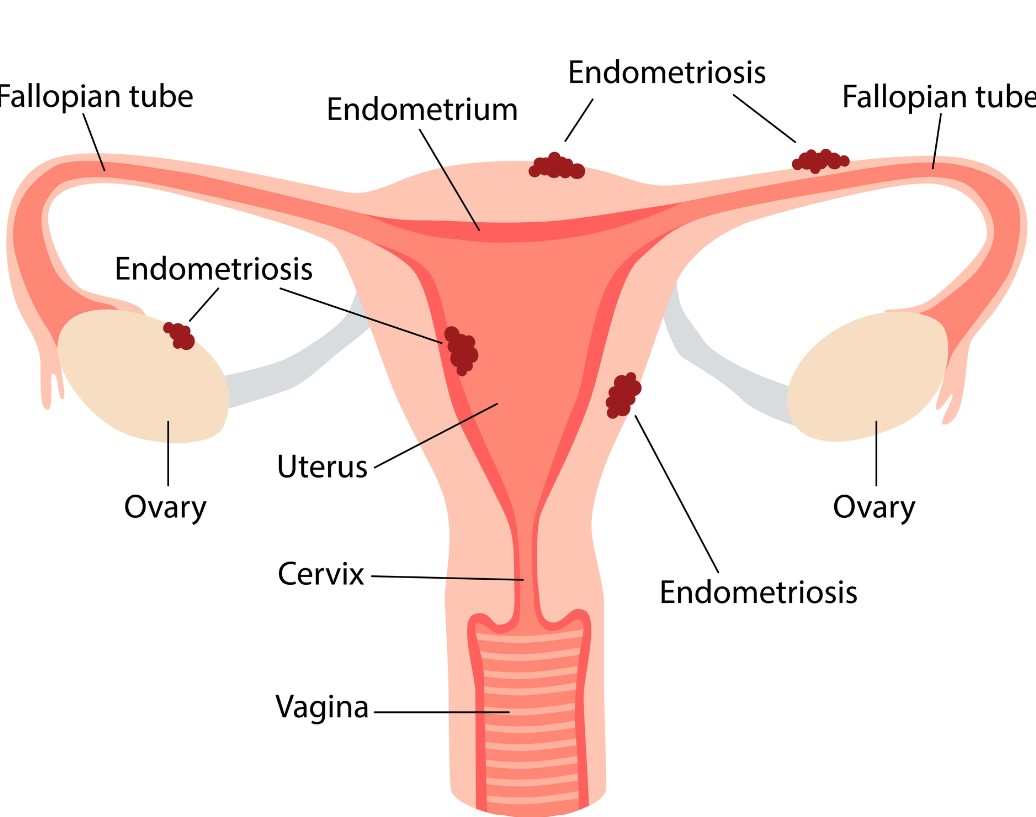Understanding Endometriosis: Symptoms, Causes, and Treatments


Endometriosis is a chronic condition that affects millions of women worldwide, yet it remains one of the most misunderstood women’s health issues. This comprehensive, SEO-friendly article aims to shed light on endometriosis by exploring its symptoms, underlying causes, and available treatment options, providing valuable insights for those affected and increasing awareness.
What is Endometriosis?
Endometriosis is a medical condition where tissue similar to the lining inside the uterus, called the endometrium, begins to grow outside the uterine cavity. These growths can occur on the ovaries, fallopian tubes, the exterior of the uterus, and other areas within the pelvic cavity. Unlike the endometrium that sheds during menstruation, the displaced tissue has no way to exit the body, leading to pain, inflammation, and in some cases, infertility.
Symptoms of Endometriosis
The symptoms of endometriosis can vary significantly from one individual to another and may include:
- Pelvic Pain: The most common symptom, often associated with menstrual periods. Pain may also occur during intercourse, bowel movements, or urination.
- Menstrual Irregularities: Heavy periods (menorrhagia) or bleeding between periods (menometrorrhagia).
- Infertility: Endometriosis is found in 20-40% of infertile women.
- Other Symptoms: Fatigue, diarrhea, constipation, bloating, and nausea, especially during menstrual periods.
It’s important to note that the severity of pain does not necessarily indicate the extent of the condition. Some women with severe endometriosis may experience mild pain, while others with a milder form of the disease may have severe pain.
Causes of Endometriosis
While the exact cause of endometriosis remains unclear, several theories exist:
- Retrograde Menstruation: This occurs when menstrual blood flows back through the fallopian tubes into the pelvic cavity instead of leaving the body.
- Embryonic Cell Transformation: Hormones such as estrogen may transform embryonic cells into endometrial-like cell implants during puberty.
- Surgical Scar Implantation: After surgeries like a hysterectomy or C-section, endometrial cells may attach to a surgical incision.
- Immune System Disorders: Issues with the immune system may make the body unable to recognize and destroy endometrial-like tissue growing outside the uterus.
Diagnosing Endometriosis
Diagnosing endometriosis can be challenging and often requires a combination of methods including:
- Pelvic Exam: Manual palpation for abnormalities, though small areas of endometriosis are often not felt.
- Ultrasound: High-frequency sound waves create images of the inside of the body.
- MRI: Detailed images of organs and tissues within the body.
- Laparoscopy: A surgical procedure where a camera is inserted into the pelvic cavity to directly observe and possibly remove endometrial growths.
Treatment Options for Endometriosis
While there is no cure for endometriosis, various treatments can help manage symptoms:
- Pain Medication: Over-the-counter pain relievers and anti-inflammatory drugs can help alleviate menstrual cramps and pelvic pain.
- Hormone Therapy: Treatments aimed at reducing or eliminating menstruation can be effective in reducing pain and slowing endometrial growth.
- Conservative Surgery: For women who wish to become pregnant or who experience severe pain, removing as much endometriosis as possible while preserving the uterus and ovaries may be recommended.
- Hysterectomy with Removal of the Ovaries: Considered a last resort, this surgery may be an option when other treatments fail.
Lifestyle Changes and Home Remedies
In addition to medical treatments, lifestyle changes can help manage endometriosis symptoms:
- Regular Exercise: Helps reduce pain and improve overall well-being.
- Heat Therapy: Applying heat to the pelvic area can alleviate cramps and pain.
- Dietary Changes: Some women find relief from symptoms by reducing intake of red meat, caffeine, and alcohol and increasing fruits, vegetables, and whole grains.
What is the typical age for the onset of endometriosis symptoms?
Endometriosis symptoms typically begin between the ages of 25 and 35, but the condition can start as early as a girl’s first menstrual period. Some women may not experience noticeable symptoms until later in life, making the condition challenging to diagnose early.
Can endometriosis lead to other health problems?
Yes, endometriosis can lead to several other health issues, including infertility, ovarian cysts, and an increased risk of developing certain types of ovarian cancer, especially if left untreated. It can also lead to complications involving the bladder and intestines in severe cases.
How does endometriosis affect fertility?
Endometriosis can affect fertility by causing inflammation and scarring, which can obstruct the fallopian tubes and disrupt the implantation of the egg. However, many women with endometriosis can still conceive, either naturally or with fertility treatments such as IVF.
What lifestyle changes can help manage endometriosis symptoms?
Lifestyle changes that may help manage endometriosis symptoms include maintaining a healthy diet, exercising regularly, practicing stress reduction techniques, and avoiding substances that may exacerbate symptoms, such as caffeine, alcohol, and processed foods.
How is endometriosis treated during pregnancy?
Endometriosis symptoms may improve during pregnancy due to hormonal changes, particularly the increased production of progesterone. However, treatment during pregnancy typically focuses on managing symptoms through safe, non-surgical methods, such as rest and moderate exercise. Always consult with a healthcare provider for appropriate management during pregnancy.
Is it necessary to have surgery for endometriosis?
Surgery is not always necessary for endometriosis, but it may be recommended if symptoms are severe, if there is significant scarring, or if fertility is affected. Laparoscopic surgery is commonly used to remove as much endometrial-like tissue as possible while preserving healthy tissue.
Can endometriosis symptoms return after treatment?
Yes, endometriosis symptoms can return after treatment. The likelihood of recurrence depends on the severity of the disease, the type of treatment received, and individual factors. Ongoing management and follow-up with a healthcare provider are important to address any recurring symptoms.
Conclusion
Understanding endometriosis is the first step toward managing this complex condition. By recognizing the symptoms, understanding the causes, and exploring treatment options, women can work with healthcare professionals to develop a management plan that best suits their individual needs. Remember, while endometriosis can be a challenging condition, there are resources and treatments available to help manage the pain and other symptoms, improving the quality of life for those affected.
Should you require further details on endometriosis or any other matter, please feel free to reach out to us at your convenience.



